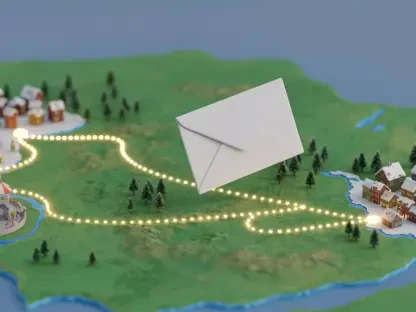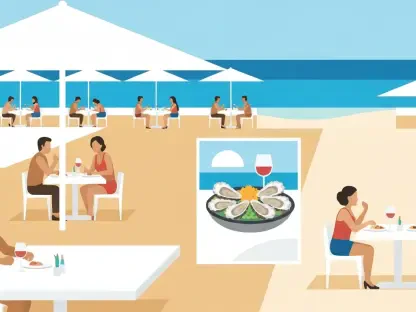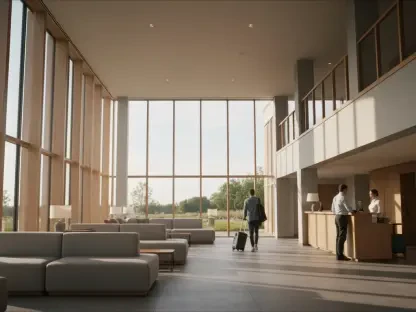When a winter trip can hinge on the distance between a ski-room door and the first turn on corduroy, the newest 2026 slate of ski-in/ski-out winners arrived as a data-backed compass for travelers who refuse to waste daylight on shuttles and long walks in boots. Announced as the season gets underway, the Pistenhotels.info Award mapped the 50 best properties built directly on the slopes, then went further to explain why these hotels outperform and how the ranking guards against hype. The story did not stop at naming names; it unpacked how design, operational fluency, and verified guest satisfaction now define true slope-side excellence across the Alps. The result functioned as both a snapshot of standards and a forecast of what the market will reward next: seamless access, recovery-first wellness, and service that feels human in an era of algorithmic noise.
That context mattered because ski-in/ski-out claims are easy to make and hard to validate, especially when marketing language blurs “near the lifts” with “on the piste.” By blending an editorial audit with a review analysis designed to curb manipulation, the ranking sought to address a persistent trust gap. It evaluated more than 900 hotels against skier-first criteria and cross-checked those findings with a multi-year record of guest sentiment. In doing so, it illuminated why certain destinations—particularly in Austria—produce outsized winners. Dense lift networks, compact resort planning, and consistent snow at altitude combined to let hotels deliver the frictionless mornings and restorative afternoons that today’s guests demand. Viewed this way, the award doubled as a planning tool for travelers and a performance mirror for hoteliers.
How the 2026 Ranking Was Decided
Credibility hinged on method, and the method began on the ground: an editorial review focused on whether a property actually simplifies a skier’s day from boot-up to last run. The assessment looked for door-to-run access that eliminates street crossings and awkward traverses. It examined ski rooms for heated storage, space to move, logical flow, and even elevator links that glide guests directly to the piste. Lift connectivity counted, but so did on-site rental and servicing, lessons, and guided tours that compress logistics into a single address. Wellness—saunas, steam rooms, pools, relaxation zones—was judged as daily recovery infrastructure, not a luxury add-on. Breakfast and dining received scrutiny for both quality and locality, with regional products viewed as a marker of intent. Family features, from kids’ areas to flexible room setups, were weighed as practical enablers of smoother mountain days.
The second pillar shifted to lived experience at scale. Reviews from Pistenhotels.info, Google, TripAdvisor, and HolidayCheck were aggregated, then stressed through a “no-fake factor” that compared five years of negative feedback against room count. That correction aimed to dilute the effect of massaged praise by normalizing discontent across hotel size. In practice, a large property with a suspiciously pristine average could not ride that number if its ratio of negatives, adjusted for capacity, suggested otherwise. The combined approach rewarded hotels that pair operational clarity with consistent delivery over time. It also filtered out short-lived spikes in sentiment that sometimes follow renovations or marketing campaigns, prioritizing steadiness across seasons. With these checks, the list elevated places that not only look right on paper but also feel right after a week on snow.
Where the Winners Are
Geography told its own story. Of the 50 recognized properties, 43 sat in Austria, six in South Tyrol, and one in Switzerland. That skew was not a quirk of preference; it reflected how Austrian resorts integrate lodging with lift systems in compact, skier-friendly layouts. When hotels sit inside the trail map rather than adjacent to it, daily friction drops, and guest satisfaction rises in measurable ways. High-alpine locales with reliable snow amplified the effect, allowing properties to deliver on-slope mornings deep into the season. The evaluation read these structural advantages clearly, and the ranking captured the outcome: Austria led because its built environment is engineered for the very thing being measured.
Within that landscape, Obertauern in Salzburg emerged as the emblem of snow-sure convenience. Multiple top-10 placements converged there, including the overall winner, Hotel Schneider, alongside Hotel Kristall, Hotel Panorama, and Aparthotel Bernhof. Salzburg’s strength stretched further with Zauchensee and Saalbach-Hinterglemm, where lift networks meet hotels at the threshold. South Tyrol’s cluster stood out for design-forward builds and efficiency-minded construction, particularly around Kronplatz and the Three Peaks area, while Switzerland’s single entry underscored that iconic terrain does not always translate to dense slope-side lodging. The distribution, in short, mirrored the Alps’ varied development philosophies—tight integration in Austria, selective nodes in South Tyrol, and more dispersed patterns in parts of Switzerland.
Who’s in the Top 10 and Why
At the top, Hotel Schneider in Obertauern embodied the ranking’s thesis: generational hospitality fused with surgical attention to skier flow. A dedicated ski-room elevator opened to the runs, turning gear-up into glide-away. The wellness footprint matched its 4-star superior class, with pools and sauna varieties positioned as nightly recovery rather than mere flourish. The property’s history—family-run since the late 1960s—showed up not as nostalgia but as iterative refinement, each upgrade aligned with how skiers actually use space and time. Close by, Hotel Kristall anchored second place with altitude-driven certainty at 1,740 meters and a service profile shaped by long-standing family stewardship, translating warmth into repeat confidence.
The podium broadened with Perfeldhof holiday apartments in Hinterglemm, which argued that apartment-style living can sit comfortably among top-tier hotels when lift access and thoughtful food sourcing meet. A farm-led breakfast program elevated mornings without sacrificing autonomy, and improved on-site parking tightened the experience. South Tyrol’s K1 Mountain Chalet, ranked fourth, offered a different lens: KlimaHaus A efficiency, design-forward apartments steps from Kronplatz gondolas, and a compact wellness suite that felt complete rather than perfunctory. These placements signaled a shift in guest priorities—space, style, and flexibility could co-exist with genuine ski-in/ski-out, provided the operational touches stayed sharp.
The middle of the top 10 showcased range without losing the through-line. In Styria, Hotel-Pension Bruckreiterhof on the Reiteralm lifted regional authenticity alongside straightforward slope-side access, leveraging a vast interconnected network and a wellness program scaled to purpose. Zauchensee Zentral blended insider passion—run by former world champion Michael Walchhofer and Barbara Walchhofer—with front-row lift proximity and cross-country options, marrying elite-ski credibility with family practicality. On the Arlberg, Hotel Zürserhof carried the banner for classic Alpine luxury, offering polished service, refined rooms, and a multi-zone spa that carved out quiet for families without compromising breadth.
Rounding out the echelon, Obertauern’s Hotel Panorama leaned into adult-focused serenity with an elevated sauna zone and suites designed for lingering recovery, positioning tranquility as a feature, not a side effect. South Tyrol’s JOAS natur.hotel.b&b kept scale intentionally small, letting a sustainability ethos guide architecture and operations while its Three Peaks-side address delivered terrain access worthy of bigger footprints. Aparthotel Bernhof completed the ten with a contemporary redesign, flexible breakfast—from buffet to in-room delivery—and a compact wellness area that hit the essentials. Together, these hotels underscored that excellence wears many forms, yet always meets the nonnegotiable: step out, click in, ski away.
What the Best Ski-In/Ski-Out Hotels Have in Common
The connective tissue across the winners was practical rather than flashy. True ski-in/ski-out meant no hedging: doors opened to pistes or to lift bases without detours. Heated, well-laid-out ski rooms turned morning chaos into muscle memory. On-site rental and tuning compressed errands into a few steps, while lesson desks and guiding services aligned ambition with ability. Wellness programs were not aspirational spa brochures; they were nightly rituals that let legs bounce back for first chairs. Breakfasts relied on regional products not for novelty but for quality and continuity, ensuring energy matched intent. These operational decisions, repeated hundreds of times across a season, showed up in guest satisfaction long after the last run.
Ownership models also mattered. Many top properties were family-run across generations, and that continuity manifested in service that felt personal without being performative. Reinvention tended to be incremental and targeted—an upgraded locker system here, a reworked flow to the ski room there—resulting in hotels that stayed current without losing character. In South Tyrol especially, sustainability threaded through design choices, from energy-efficient envelopes to materials that aged well in high alpine environments. The ecological layer did not announce itself loudly; it simply made buildings more comfortable, cheaper to operate, and easier on the conscience. Meanwhile, altitude and snow reliability acted as multipliers, with high stations like Obertauern turning operational excellence into consistently satisfied guests.
How to Use This List Now
For travelers, the ranking functioned as a shortcut to weeks that feel seamless. One path began by choosing integrated resorts—Obertauern for high confidence, Saalbach-Hinterglemm for network breadth, Zauchensee for race-bred precision—then filtering by property type. Couples angled for adult-leaning wellness zones and calm suites; families weighed kids’ spaces and lesson logistics; apartment fans picked flexible setups with breakfast options and smart storage. It helped to study maps like a daily sequence: elevator down, door out, lift up, ski back, spa, dinner. If each step sat within steps of the last, the stay would track. That approach kept focus on what counts during a winter week: long mornings on snow, short transitions, and evenings that reset the body.
For hoteliers and destinations, the blueprint was equally clear. True slope access could not be faked, but ski logistics could always be refined: widen boot benches, add drying capacity, fix traffic pinch points, and link ski rooms to exits that face the right fall line. Wellness investments needed to be coherent rather than colossal, with heat, water, and quiet configured for recovery. Food programs gained with regional sourcing and timing that respects early starts. Above all, transparency mattered. Cross-platform feedback stood up better when service stayed steady week after week, and the “no-fake factor” punished attempts to game perception instead of performance. With that in mind, the complete top 50 remained available in one place at pistenhotels.info/award, and the ranking had pointed to concrete steps that, when executed, turned good locations into outstanding stays.









